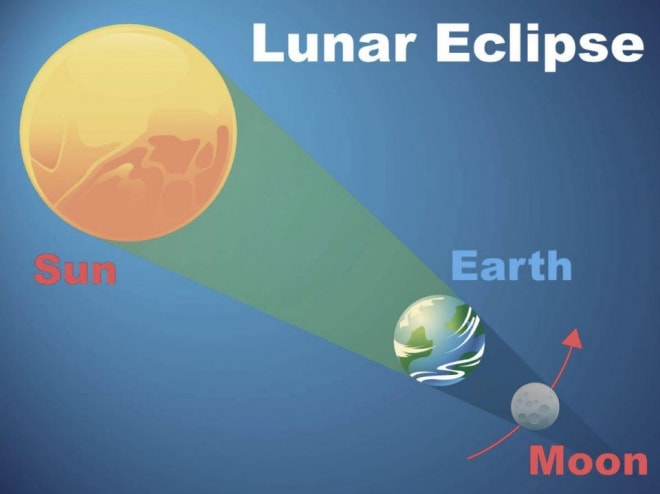Lunar Eclipse 2018 Live Streaming in India: The world will witness of the most stunning phenomena among celestials — the lunar eclipse on July 27 which will also be the longest eclipse of the century. The moon will also don a deep red colour as it hides behind the shadow of the Earth. Earthlings around the world will be treated to this special event that will last 1 hour and 43 minutes, the longest this century. During a lunar eclipse, the Sun, Earth and moon align in a straight line. The alignment is Sun > Earth > Moon. The sun shines brightly on the Earth and the Moon is exactly behind Earth in its shadow. It means there would be no direct sunlight on the moon.

Why is this Lunar Eclipse so special?
On July 27, two things would be taking place: The three celestial bodies will be aligned in a straight line and there will be a full moon at the same time. Hence it will be a ‘Total Lunar Eclipse’ instead of partial eclipse.
CHECK | Lunar Eclipse 2018 date and time in India
Will the Lunar Eclipse be visible in India?
Yes, Lunar Eclipse will be visible in India. According to timeanddate.com the Lunar eclipse will be visible from 10:44 pm IST. However, it would be a partial lunar eclipse. The total lunar eclipse will be visible at 1:00 am IST and then the moon will appear full red. Furthermore, for the Lunar Eclipse 2018 Live streaming, you can visit NASA website, Facebook or Twitter account to watch the event unfold.
What is a Blood Moon?
The lunar eclipse will also be a blood moon. A blood moon is a term used when the Earth’s natural satellite glows deep red in colour. The reason for this is due to sunlight scattering. Since during an eclipse there is no direct sunlight hitting the moon, all of the light which reaches the moon and bounces back to Earth is indirect. The indirect light goes through Rayleigh scattering as it passes through Earth’s atmosphere.
READ | Food during blood moon? Watching it? Your curious questions answered here
This, in effect, scatters the longer blue and violet wavelengths more than the shorter red and orange wavelengths. Hence, more red/orange wavelength light reaches the moon and is bounced back to Earth, presenting to us a deep red blood moon.

